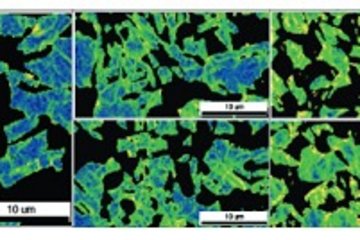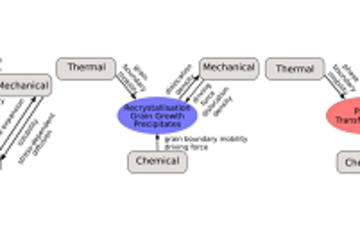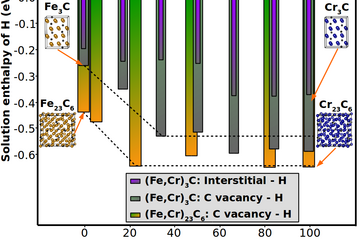All genres
1.
Journal Article
Current Challenges and Opportunities in Microstructure-Related Properties of Advanced High-Strength Steels. Metallurgical and Materials Transactions A 51, pp. 5517 - 5586 (2020)
2.
Journal Article
Microchemistry-dependent simulation of yield stress and flow stress in non-heat treatable Al sheet alloys. Modelling and Simulation in Materials Science and Engineering 28 (3), 035010 (2020)
3.
Journal Article
DAMASK – The Düsseldorf Advanced Material Simulation Kit for modeling multi-physics crystal plasticity, thermal, and damage phenomena from the single crystal up to the component scale. Computational Materials Science 158, pp. 420 - 478 (2019)
4.
Journal Article
Temperature dependent strain hardening and fracture behavior of TWIP steel. International Journal of Plasticity 104, pp. 80 - 103 (2018)
5.
Journal Article
A crystal plasticity model for twinning- and transformation-induced plasticity. Acta Materialia 118, pp. 140 - 151 (2016)
6.
Journal Article
Recrystallization behavior of a high-manganese steel: Experiments and simulations. Acta Materialia 100, pp. 155 - 168 (2015)
7.
Talk
Multi-physics simulation of advanced high strength steels. Thermec 2018, Paris, France (2018)
8.
Talk
DAMASK: the Düsseldorf Advanced MAterial Simulation Kit for studying multi-physics crystal plasticity phenomena. 10 Years ICAMS - International Symposium, Bochum, Germany (2018)
9.
Talk
An improved unified internal state variable model exploiting first principle calculations for flow stress modeling of aluminium alloys. International Conference on Aluminum Alloys (ICAA), Montreal, Canada (2018)
10.
Talk
Thermo mechanically coupled simulation of high manganese TRIP/TWIP steel. 27th International Workshop on Computational Materials
Modeling, IWCMM 27
, Leuven, Belgium (2017)
11.
Talk
From ab-initio to macro: microchemistry dependent flow stress modeling based on first principle calculations. International Conference on Computational Plasticity (COMPLAS), Barcelona, Spain (2017)
12.
Talk
DAMASK - Düsseldorf Advanced Material Simulation Kit. 7th MaDIS open seminar, National Institute for Materials Science, Tsukuba, Japan (2017)
13.
Talk
Thermo mechanically coupled simulation of high manganese TRIP/TWIP Steel. 5th International Conference on Material Modeling, ICMM 5, Rome, Italy (2017)
14.
Talk
Development of dislocation density based constitutive models ? the parameter dilemma. GAMM 2017, 88th Annual Meeting of the International Association of Applied Mathematics and Mechanics
, Weimar, Germany (2017)
15.
Talk
DAMASK - the Düsseldorf Advanced Material Simulation Kit Engineering of Advanced Materials. "Engineering of Advanced Materials: Numerische Optimierung basierend auf Vorhersagemodellen" Meeting, Erlangen, Germany (2016)
16.
Talk
From Phenomenological Descriptions to Physics-based Constitutive Models EPSRC Workshop on Multiscale Mechanics of Deformation and Failure in Materials. EPSRC Workshop on Multiscale Mechanics of Deformation and Failure in Materials
, Aberdeen, Scotland (2016)
17.
Talk
Ab-Initio Guided Design of Twinning Induced Plasticity and Weight Reduced Austenitic Steels. MRS Fall Meeting, Boston, MA, USA (2016)
18.
Talk
Multiscale micromechanical modelling for advanced high strength steels including both the TRIP and TWIP effect. MSE 2016, Darmstadt, Germany (2016)
19.
Talk
Multiscale micromechanical modelling for advanced high strength steels including both the TRIP and TWIP effect. Thermec 2016, Graz, Austria (2016)
20.
Talk
Multiscale micromechanical modelling for advanced high strength steels including both the TRIP and TWIP effect. XXV International Workshop on Computational Micromechanics of Materials, Bochum, Germany (2015)











